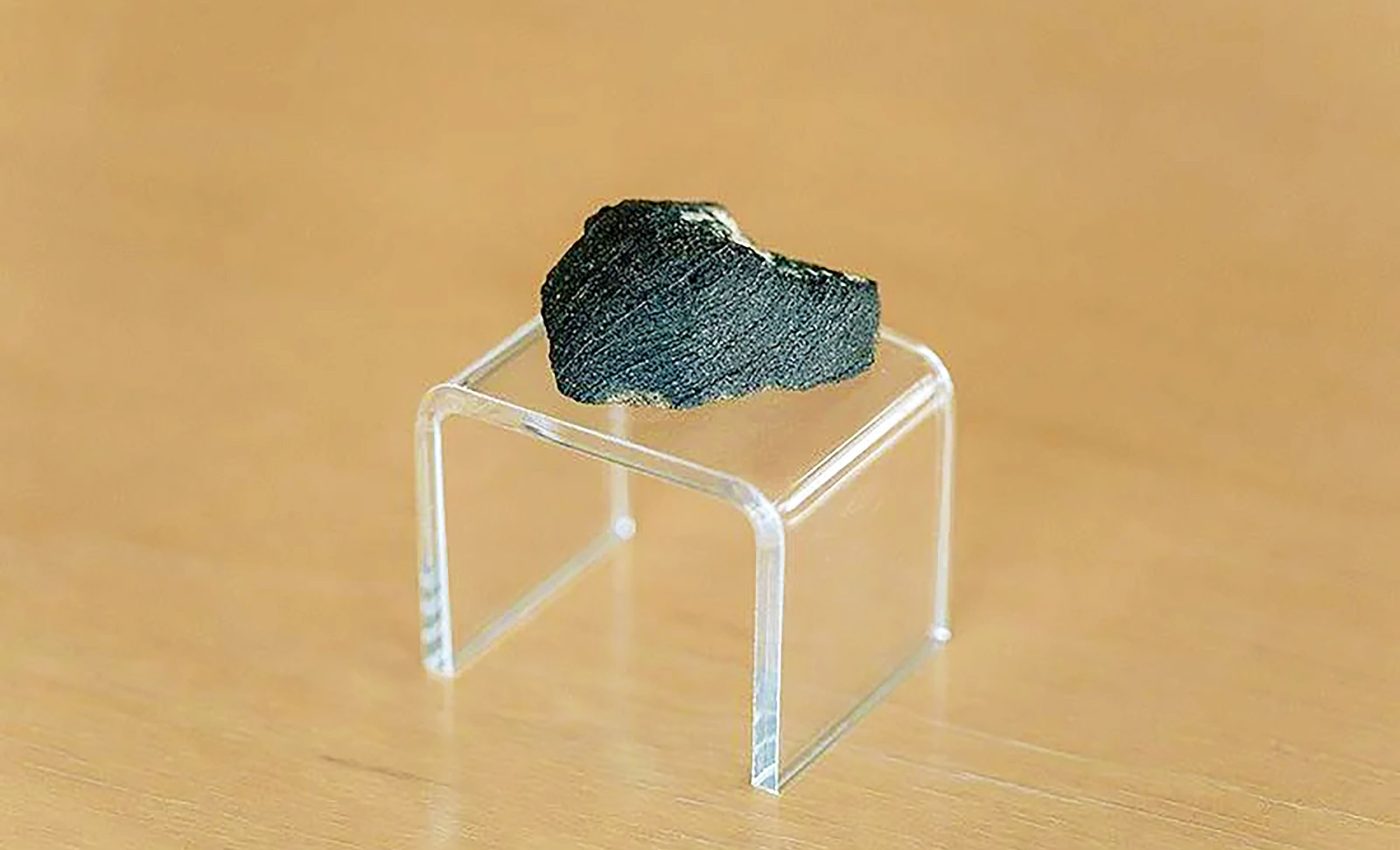
Meteorite found in an old desk shows Mars had water about 700 million years ago
An asteroid impact on Mars about 11 million years ago, sending fragments of the Red Planet hurtling through space. One of these pieces eventually crashed into Earth and somehow made its way into a drawer of an old desk at Purdue University.
This rare find, now known as the Lafayette Meteorite, has been instrumental in unlocking secrets of Mars’ watery past, with new research recently published in the journal Geochemical Perspective Letters that provides insight into the timing and nature of Mars’ ancient water activity.
Tracing Mars’ watery past
Scientists have long known that the Lafayette Meteorite interacted with liquid water on Mars, but the exact timing of this event was uncertain.
Dr. Marissa Tremblay, an assistant professor at Purdue University’s Department of Earth, Atmospheric, and Planetary Sciences (EAPS), led an international research team to determine the age of the water-altered minerals in the meteorite, pinpointing it to 742 million years ago.
“Dating these minerals can therefore tell us when there was liquid water at or near the surface of Mars in the planet’s geologic past,” Tremblay explained.
The findings suggest that while liquid water wasn’t abundant on the surface at this time, it likely came from melting subsurface ice, or permafrost, caused by intermittent volcanic activity — a phenomenon still observed on Mars today.
Preserving a moment in Mars’ geological timeline
The study not only identified when water interacted with the meteorite but also established that the dating was unaffected by events after the meteorite left Mars.
“The age could have been affected by the impact that ejected the Lafayette Meteorite from Mars, the heating it experienced during the 11 million years it was floating in space, or the heating when it fell to Earth,” Tremblay said.
However, the team confirmed that none of these factors altered the age, validating the timeline of water interaction.
Study co-author and Purdue EAPS researcher Ryan Ickert applied heavy isotope analysis to further verify that previous data on the meteorite’s water-rock interaction had likely been skewed by other geological processes.
“This meteorite uniquely has evidence that it has reacted with water. The exact date of this was controversial, and our publication dates when water was present,” said Ickert.
Mysterious journey of the meteorite
The Lafayette Meteorite’s journey to Purdue is something of a mystery. It was found in a university drawer in 1931, though how it got there remains unknown.
In previous research, Tremblay and her team used crop disease markers from organic contaminants found on the meteorite to narrow down when it might have fallen to Earth.
Once the meteorite was ejected from Mars, it endured constant cosmic ray bombardment in space, which produced certain isotopes, offering clues to its time of impact on Earth.
“Many meteoroids are produced by impacts on Mars and other planetary bodies, but only a handful will eventually fall to Earth,” Tremblay said.
Planetary time capsules
Meteorites like Lafayette serve as planetary time capsules, offering invaluable data on the geological and environmental history of their home worlds. With their dense structure, metallic content, and magnetic properties, meteorites are often distinguishable from Earth rocks.
“We can identify meteorites by studying what minerals are present in them, their mineral relationships, and by checking for a fusion crust formed during entry into Earth’s atmosphere,” Tremblay explained.
By analyzing these traits and their chemical signatures, scientists can often determine a meteorite’s planetary origin.
Complex history of meteorites
This research marks a significant milestone for the team, which included scientists from institutions across the globe, such as the Scottish Universities Environmental Research Center (SUERC), the University of St. Andrews, the University of Glasgow, the University of Bristol, and London’s Natural History Museum.
“Before moving to Purdue, Ryan and I were both based at SUERC, where the argon-argon isotopic analyses of the alteration minerals in Lafayette took place,” Tremblay said.
Their partners at SUERC and the Natural History Museum have long contributed to studying Lafayette’s complex history.
Dating minerals in meteorites
Dating the water-altered minerals in Lafayette, and others in its class of Martian meteorites called nakhlites, has been a central focus in planetary science, as they uniquely capture moments when liquid water was present on Mars.
Due to complex alterations over time, previous attempts to date these minerals were plagued with uncertainties.
However, the team has now developed a robust dating method that could be applied to other meteorites, enhancing our understanding of when water might have been present on Mars and other planetary bodies.
The future of planetary science
Thanks to the Stahura Undergraduate Meteorite Fund, Tremblay and Ickert’s research on the Lafayette Meteorite will continue, with the involvement of undergraduate students in Purdue EAPS.
This opportunity allows students to engage in real-world planetary science, helping to reveal the intricate histories of meteoritic samples.
Tremblay and her team’s work on the Lafayette Meteorite highlights its scientific significance, revealing a complex history that ties it to Mars’ geological past.
Their findings not only deepen our understanding of Mars but also set a precedent for future studies that might unveil even more about the red planet’s climate history, water activity, and potential for supporting life.
—–
Like what you read? Subscribe to our newsletter for engaging articles, exclusive content, and the latest updates.
Check us out on EarthSnap, a free app brought to you by Eric Ralls and Earth.com.
—–













